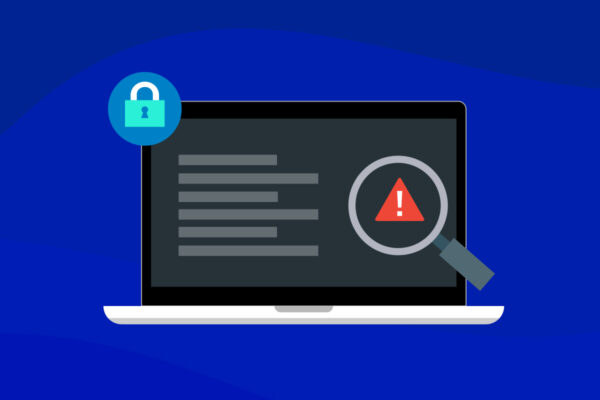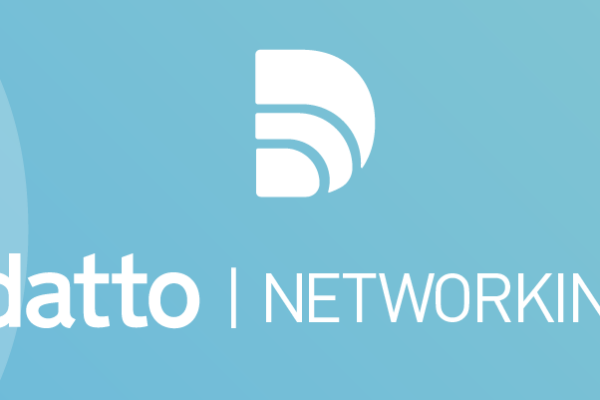What Is Security Service Edge (SSE)? Capabilities, Benefits and How It Works
Cybercriminals are always on the move to achieve their personal, malicious goals, disrupting businesses and individuals in the process. There can never be enough cybersecurity solutions, services and practices in place to keep them at bay.
While many effective services prove resourceful in eliminating cyber-risks, security service edge (SSE) is one particular solution that redefines the way users and businesses interact with each other in a secure IT environment.
In this article, we’re going to dive into the world of SSE to understand what it is, why it’s important and what role it plays in the modern, digital-first business landscape.
What is security service edge (SSE)?
A vital component of the broader Secure Access Service Edge (SASE) framework, SSE stands out by focusing exclusively on consolidating security functions into a robust and centralized cloud service. In one short sentence, SSE is a cloud-based service that secures access to the web, cloud services and private applications.
An SSE solution typically includes access control, threat protection, security monitoring, data security and acceptable use policy (AUP) enforced by network and API-based integrations. Additionally, it offers heightened security and improved visibility for end users accessing Software-as-a-Service (SaaS), Platform-as-a-Service (PaaS) and Infrastructure-as-a-Service (IaaS) environments.
Although a cloud-based solution, it may include on-premises or agent-based components.
Why do we need security service edge?
There are multiple reasons why organizations need SSE. From offering comprehensive protection and cloud-centric agility to enabling the implementation of robust security measures, SSE empowers them to navigate the complexities of today’s advanced threat landscape.
Moreover, with the increased dependence on cloud-based architecture, securing cloud applications and mobile users has become quite challenging. Conventional network security methods simply don’t cut it anymore, and here are a few factors that explain why:
- Legacy technologies connected to the data center struggle to track connections between users and cloud applications.
- The process of backhauling user traffic to a data center through a traditional VPN for inspection causes delayed connectivity or operation.
- VPNs are vulnerable and susceptible to exploitation due to poor patch management.
- The expenses related to administration and hardware maintenance render traditional data center approaches more expensive.
What is security service edge used for?
SSE serves as a means to develop effective security strategies that help organizations with a modern, cloud-native security architecture. Aside from its apparent function as a cybersecurity solution, here is a list of uses for SSE:
- Streamlining the administration and oversight of security controls for easier management.
- Proactively defending web users against advanced malware and ransomware threats.
- Substituting VPNs to ensure the secure connection of remote workers accessing private applications.
- Offering enhanced visibility and control over SaaS applications.
- Safeguarding the workforce from various internet threats.
- Enabling secure and adaptable access to private corporate applications.
- Ensuring the protection of data across all cloud platforms and applications.
- Providing secure remote access to applications, data, tools and other corporate resources for employees, trusted partners and vendors.
- Monitoring and analyzing user behavior within the network for enhanced security.
What is the difference between SASE and SSE?
While SSE is a subset of SASE, the main difference between the two lies in scope and focus within the broader context of cybersecurity. Below is a representation of the same.
| Aspect | SSE | SASE |
| Focus | Primarily security-oriented, consolidating security functions into a cloud service. | Converges both networking and security services into a unified cloud-based framework. |
| Scope | Revolves around cloud-based security and networking architecture, protecting users and data. | Extends beyond security, incorporating networking services to optimize the entire infrastructure. |
| Components | Emphasizes security functionalities, like threat protection and access control. | Integrates both security and networking components for a comprehensive solution. |
| Nature of Service | A cloud-based security service. | A unified cloud-based service that combines networking and security functions. |
| Application Focus | Primarily secures access to web, cloud services and private applications. | Addresses the complete needs of modern, decentralized organizations, optimizing both networking and security. |
How does security service edge work?
SSE operates on a foundational principle of unifying security functions within a centralized cloud service. We’ve elaborated on its fundamentals and significance below.
- Unified protection: SSE introduces a seamless, cloud-based security and networking architecture that does not conform to any conventional approach to cyberdefense. By unifying these elements, SSE ensures a holistic and integrated safeguard for users and business-critical data, effectively countering the current threat of evolving cyberattacks.
- Cloud-centric agility: Since many business operations and workflows have shifted toward cloud-centric operations, SSE adopts an inherently cloud-based strategy. In doing so, it’s able to enhance scalability and flexibility and align security measures with the dynamic and decentralized nature of contemporary business operations.
- Comprehensive security: SSE maintains a host of robust security capabilities. It encompasses access control, threat protection, data security, security monitoring and AUP, while providing a strong defense mechanism that addresses the diverse array of threats organizations face today.
- Implementation of AUPs: SSE facilitates the implementation of AUPs that define how employees and users interact with an organization’s network resources. These policies set clear guidelines on permissible activities, contributing to a secure and productive IT environment.
- Secure resource access: As organizations increasingly rely on web applications, cloud services and private applications, SSE becomes the perfect solution to access these resources securely. By consolidating security functions into a single cloud service, SSE streamlines the process of managing and enforcing security policies, ensuring a secure and frictionless user experience.
Now that we understand SSE’s fundamentals and how it works, let’s look at SSE’s capabilities.
What are the capabilities of SSE?
SSE has four core capabilities that help organizations fortify their cybersecurity measures. Each of these four play a distinct role, contributing significantly to SSE’s effectiveness.
- Zero trust network access (ZTNA): ZTNA is a foundational principle within SSE that operates on the premise of trust verification for every user and device, irrespective of their location. By adopting a zero trust approach, SSE ensures that access is granted based on continuous verification of the user’s identity and device health. This minimizes the risk of unauthorized access and enhances an organization’s overall security posture.
- Secure web gateway (SWG): SWG provides a secure gateway for web traffic, offering real-time inspection and filtering to identify and block potential threats. This capability is crucial for protecting users from web-based threats, including malware, phishing attacks and malicious websites. SWG ensures that web access is secure and compliant with organizational policies.
- Cloud access security broker (CASB): Acting as a security intermediary between users and cloud services, CASB monitors and enforces security policies for data transfers and user interactions. It enhances SSE’s capabilities by ensuring secure access to cloud applications, preventing data leakage and enforcing policies for compliance. It also provides visibility and control over sensitive data shared within cloud environments.
- Firewall-as-a-Service (FWaaS): FWaaS extends traditional firewall capabilities to the cloud, enabling organizations to enforce network security policies without the need for on-premises hardware. In doing so, SSE ensures that organizations can implement robust firewall protection in a cloud-centric environment. This component facilitates secure data transmission, application control, access control and advanced threat prevention while maintaining network scalability and flexibility.
With such strong cybersecurity capabilities, it becomes clear that SSE is a must-have solution for remote and hybrid workers.
Now, let’s go over the major benefits of implementing SSE.
How can security service edge benefit my organization?
Here are some ways SSE can help your organization significantly improve its cybersecurity management capabilities in a short period.
- Consistent cloud-based security: SSE provides robust, consistent cloud-based security that protects every facility used by a business, like its headquarters, branch offices and remote or hybrid users. This ensures a uniform security posture regardless of the user’s location, enhancing overall cyber resilience.
- Optimized network and security performance: By eliminating the need to backhaul traffic to a central data center or firewall for enforcement, SSE ensures optimized, low-latency network and security performance. This results in faster and more efficient data transmission, reducing bottlenecks and enhancing the user experience.
- Scalability to meet shifting needs: SSE offers scalability to adapt to your organization’s changing needs, such as the adoption of new cloud services or the growth and movement of the workforce. This flexibility allows your security infrastructure to seamlessly accommodate expansions or adjustments in your operational landscape.
- Streamlined security and networking management: The centralized, cloud-delivered platform of SSE streamlines security and networking management. This unified approach simplifies the administration of critical security services, providing a consolidated view for monitoring, configuring and managing security measures across the organization. This leads to increased operational efficiency and a more cohesive security strategy.
- Predictable costs and reduced operational overhead: SSE minimizes the need for on-prem hardware deployments, resulting in more predictable costs and reduced operational overhead. This shift to a cloud-delivered model allows organizations to optimize their resource allocation, focusing on strategic initiatives rather than extensive hardware maintenance.
SSE offers your organization a brand new and transformative approach to network security, aligning with the dynamics of the modern business and its operations. With strengthened cloud-based security, optimized network performance, scalability, streamlined management and cost efficiency, SSE becomes a strategic enabler for a secure and adaptable digital environment.
It may not be easy to find the perfect SSE solution for your organization, but we’ve got you covered. With Datto Secure Edge, you’ll never experience the compromise between robust cloud-based security and seamless network performance again. It is SASE made simple.
Deploy SASE with Datto Secure Edge
Packed with everything you want in an SSE solution, Datto Secure Edge gives you more – a complete SASE offering, which changes the way you secure and control remote and hybrid workers.
Elevate the safety, speed and usability of your work-from-home or on-the-go endeavors. Datto Secure Edge provides lightning-fast, simple and secure access to business applications, whether in the cloud or on-site. Experience the future of remote work with the following features:
- Next-gen firewall
- Corporate Wi-Fi access for a seamless connection
- Unparalleled speed and performance with Quality of Service (QoS)
- Traffic prioritization to eliminate latency and improve SaaS experiences
- SD-WAN
- Simplified licensing and deployment for effortless activation.
Schedule a demo now to witness the game-changing capabilities of Datto Secure Edge and transform the way you work remotely.



